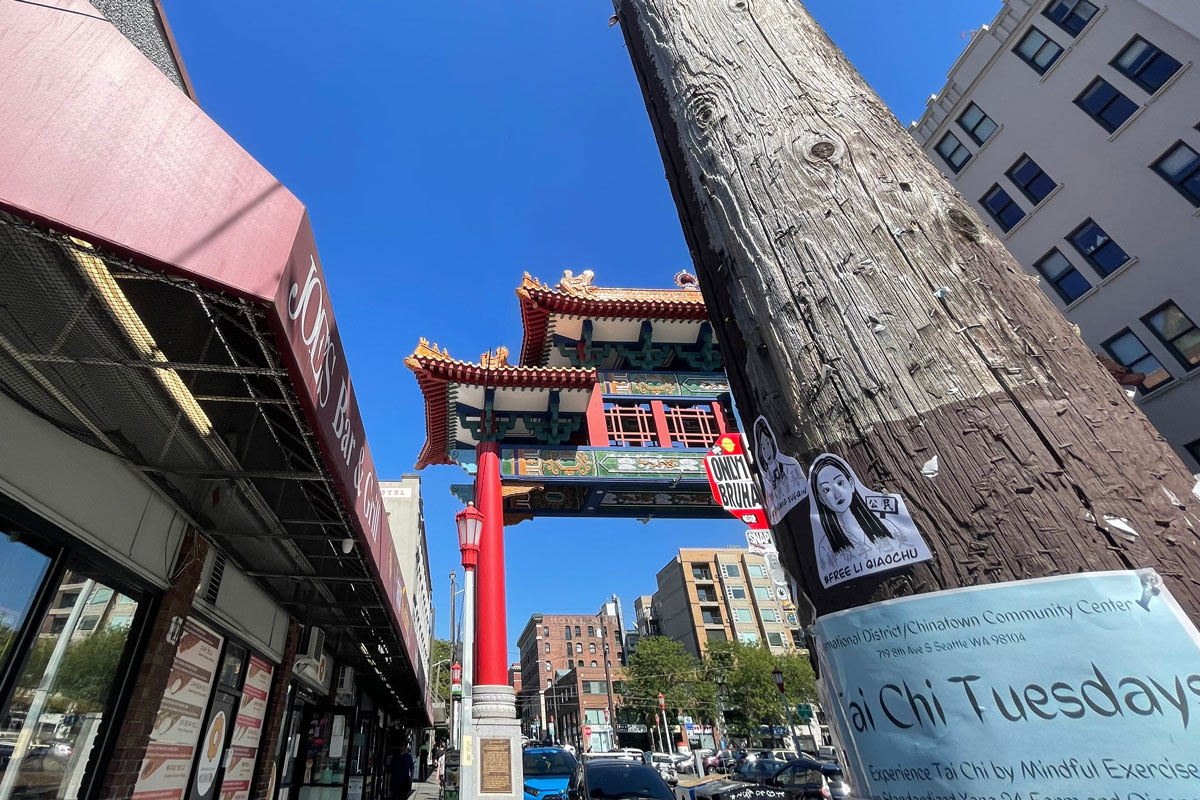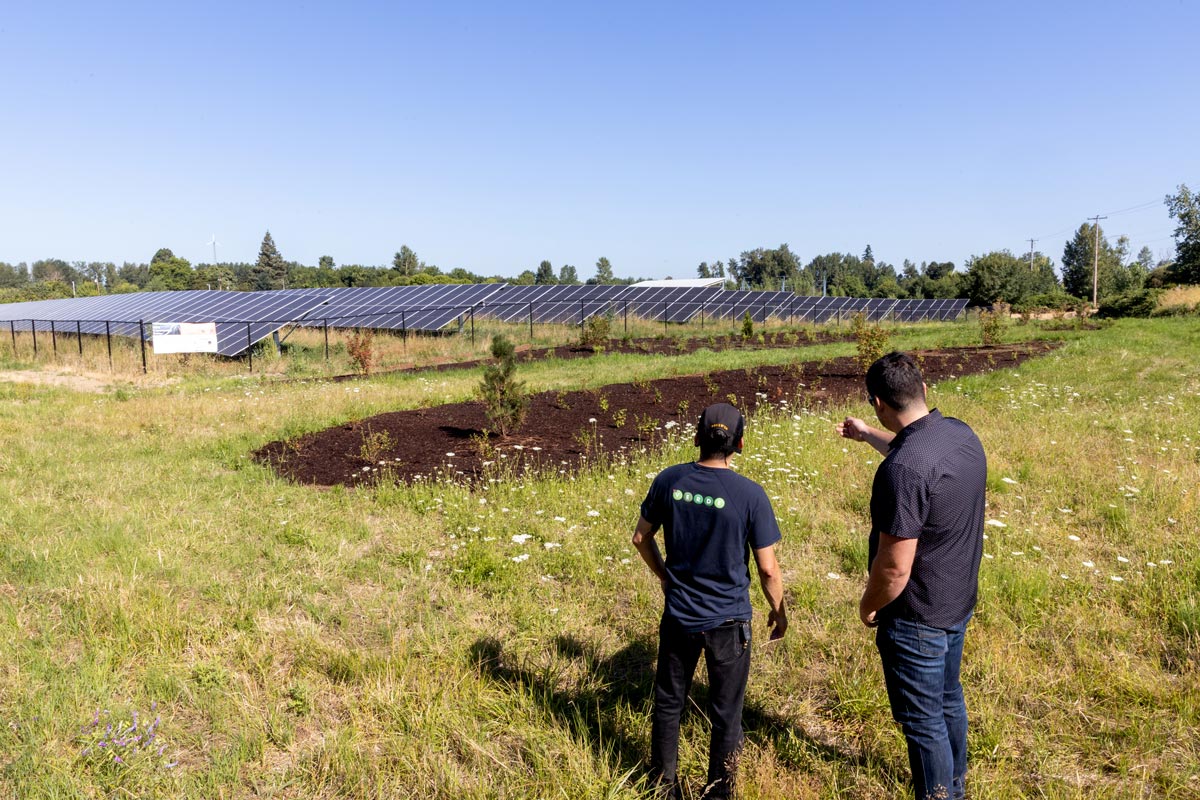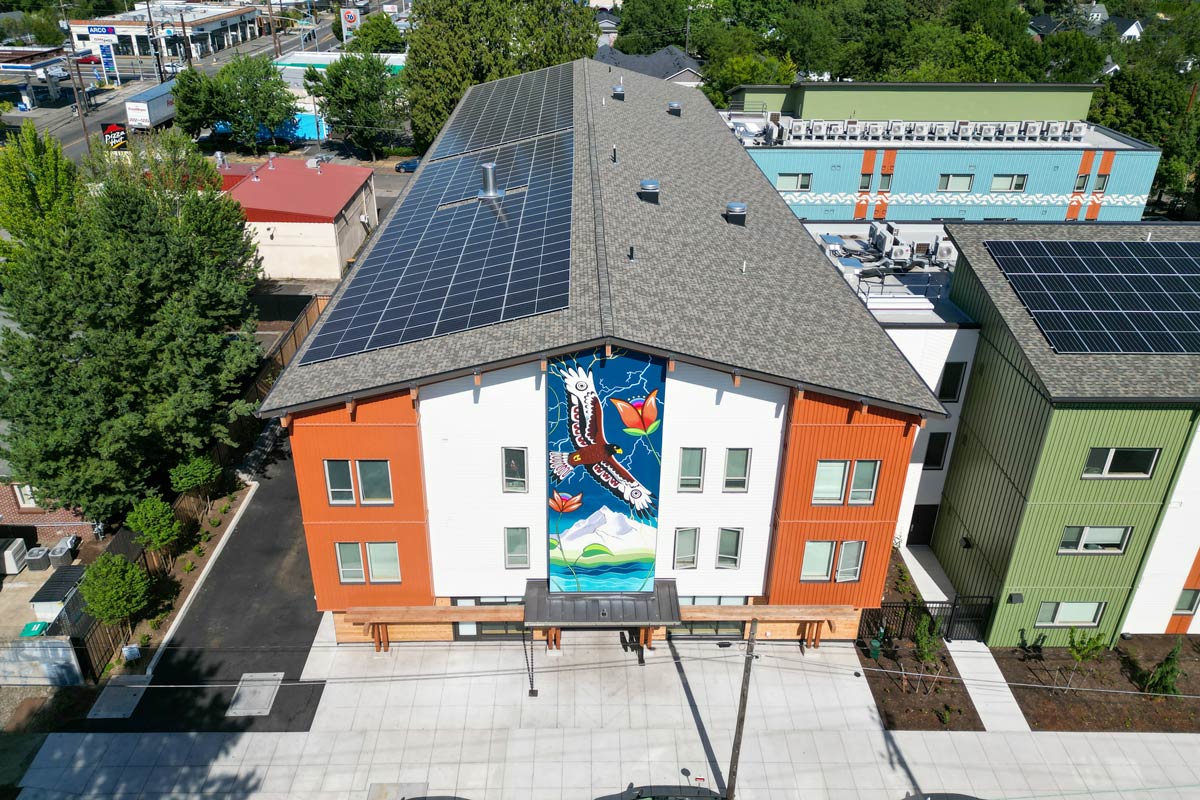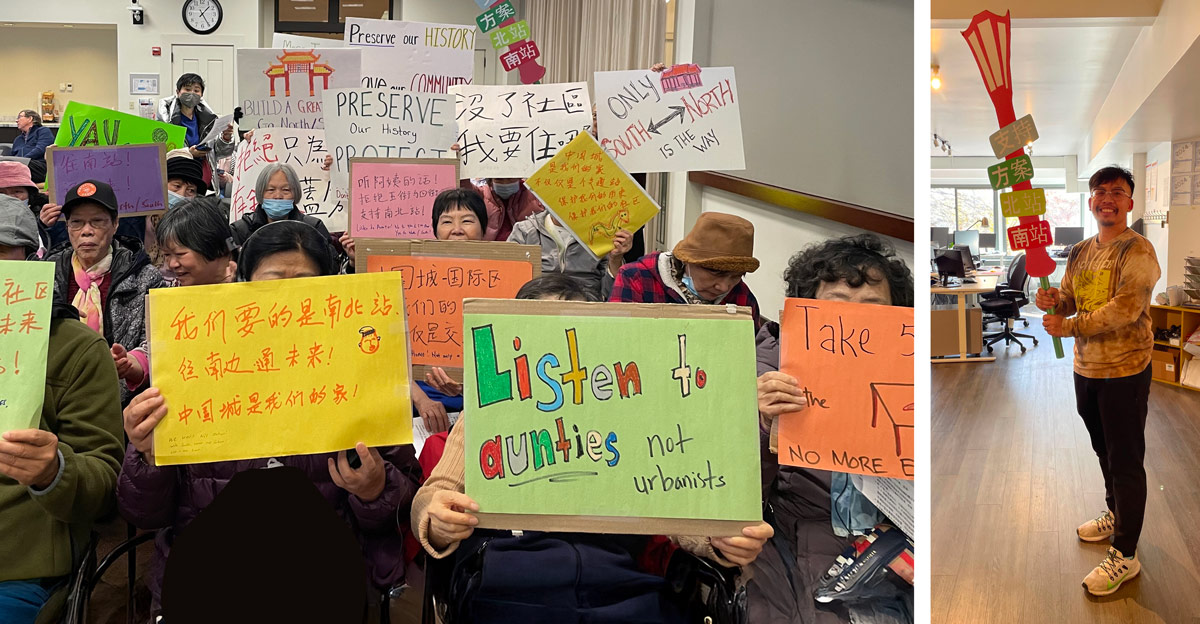
Organizers from Sage advocate for changes to plans for the Ballard Link Extension light-rail service: (left) elders in a Sound Transit board meeting and (right) Sage organizer Rachtha Danh, holding a sign that translates as “Let’s Go North and South.” Photo courtesy of Sage.
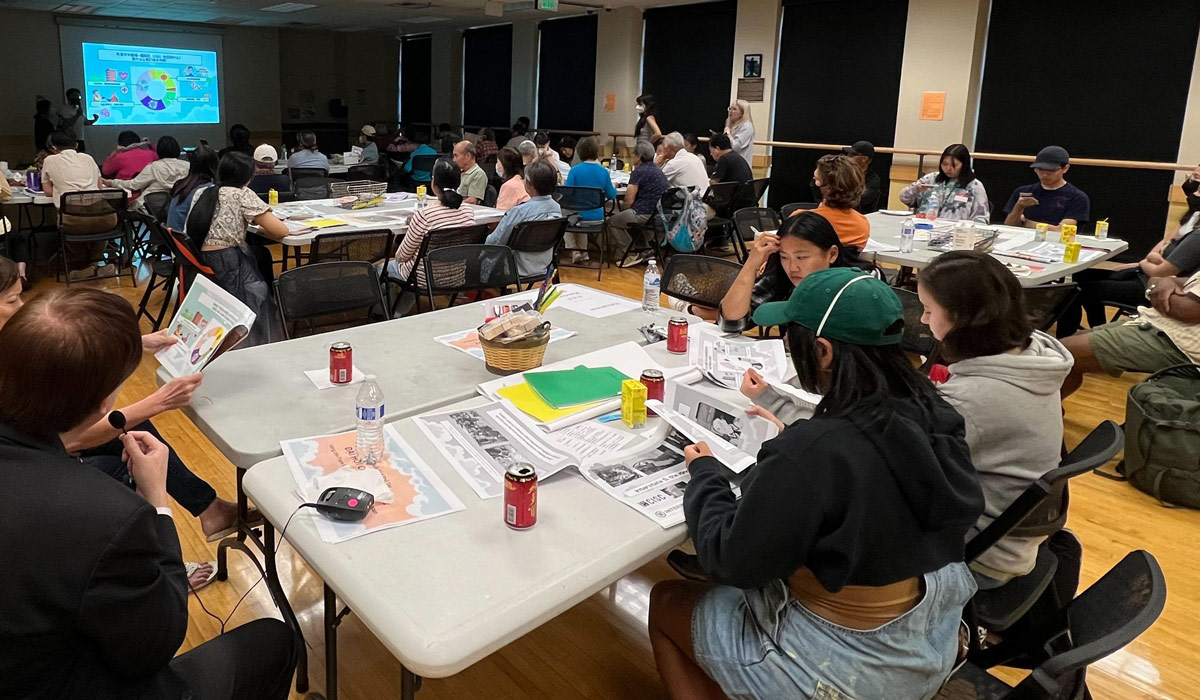
Residents gather to envision the next 100 years of the CID neighborhood in Seattle. Photo courtesy of Sage.
Sage’s work hinges on building coalitions, advocating for justice-centered policy, and advancing participatory leadership—all vital aspects of communities’ capacity for self-determination.

